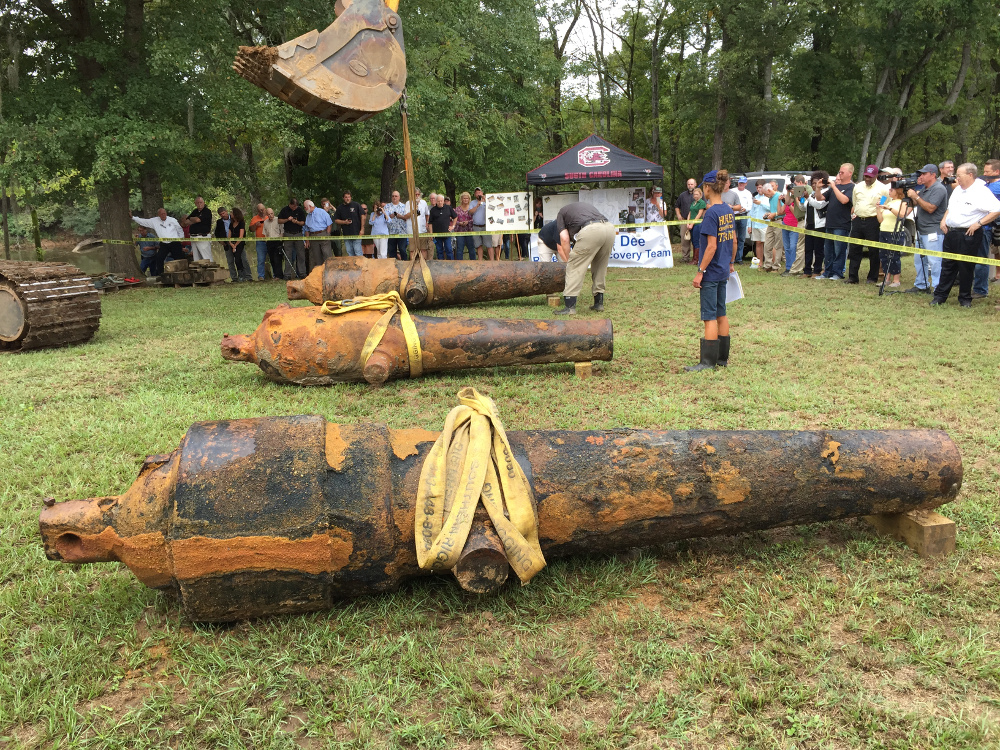-
Tips for becoming a good boxer - November 6, 2020
-
7 expert tips for making your hens night a memorable one - November 6, 2020
-
5 reasons to host your Christmas party on a cruise boat - November 6, 2020
-
What to do when you’re charged with a crime - November 6, 2020
-
Should you get one or multiple dogs? Here’s all you need to know - November 3, 2020
-
A Guide: How to Build Your Very Own Magic Mirror - February 14, 2019
-
Our Top Inspirational Baseball Stars - November 24, 2018
-
Five Tech Tools That Will Help You Turn Your Blog into a Business - November 24, 2018
-
How to Indulge on Vacation without Expanding Your Waist - November 9, 2018
-
5 Strategies for Businesses to Appeal to Today’s Increasingly Mobile-Crazed Customers - November 9, 2018
Civil War cannons raised from South Carolina river
Photo of Civil War-era cannons that were pulled from the Great Pee Dee River in Florence County in South Carolina on Tuesday, September 29, 2015. Each weighed up to 15,000 pounds.
Advertisement
The researchers said Mars Bluff was one of about a dozen Confederate shipyards built on inland waterways so they could construct gunboats, yet be protected from the forces of the Union blockade.
One of the cannons, known as a smoothbore Dahlgren, was forged in Pennsylvania.
A crew from the University of South Carolina lifts a Civil War weapon – a 6.4-inch Brooke rifle cannon – from the Pee Dee River in Mars Bluff, S.C. .
Just three months after it launched, the CSS Pee Dee’s career was cut short on March 15, 1865, in response to U.S. Gen. William T. Sherman’s northward advance to North Carolina.
“In addition to logs carpeting the bottom, the turbid waters and the varying depth of burial of the cannons and the other artifacts caused us to move slowly and systematically to document the assemblage of the discarded materials from the ship and navy yard”, Spirek said.
James Spirek is the state underwater archaeologist in charge of recovering the cannons from the river.
He said community funding has helped with the recovery and conservation of the cannons.
“The students and volunteers were key to deploying the geophysics and defining the hidden below ground portions of the naval yard”, Leader said.
Advertisement
Their efforts were greatly facilitated by earlier work conducted at the site, particularly by a private research group, the CSS Pee Dee Research and Recovery Team, operating under an archaeological license issued by SCIAA in the late 1990s. Bruce and Lee Foundation in Florence.





























